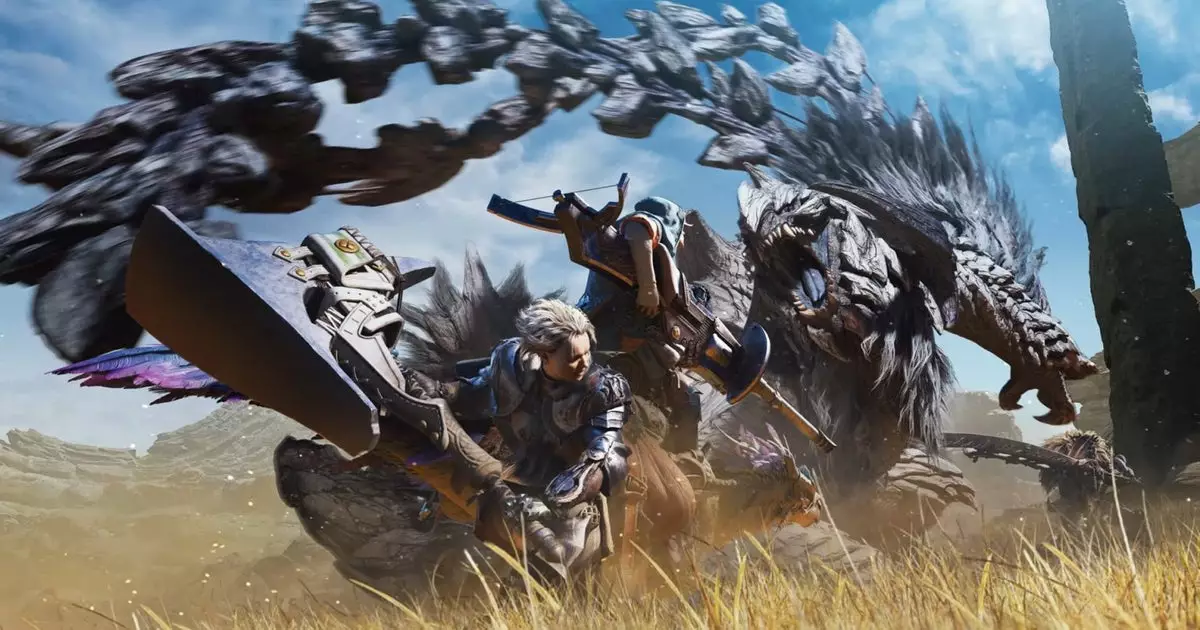The “Monster Hunter” franchise by Capcom has carved out a unique niche in the gaming landscape by blending intricate gameplay mechanics, immersive worlds, and a rich tapestry of creature design. As players dive into the latest title, “Monster Hunter: Wilds,” they encounter an enticing mix of nostalgia and progression. However, beneath the appealing layers of new aesthetics and adjusted combat mechanics lies a somewhat predictable approach to weapon diversity, which warrants a deeper examination.
“Monster Hunter: Wilds” introduces fresh elements such as new tinctures derived from various fantastical creatures. Despite this, the core weaponry remains rooted in a formula familiar to long-time fans of the series. Players are greeted with 14 distinct weapon categories, which range from the heavy-hitting Greatsword to the more intricate Hunting Horn. While these weapons may appear to have evolved in design and move sets, the essence of combat remains consistent with past iterations. For players who have journeyed through titles like “Monster Hunter Freedom 2,” launched in 2007, the overarching feel can stir sentiments of déjà vu.
Director Yuya Tokuda’s comments regarding weapon development shed light on this creative strategy. There is a clear dilemma faced by the developers: while there is potential for introducing new weapon types, the priority lies in refining and rebalancing existing weaponry to ensure a polished experience. This approach is not merely about aesthetics; it is a commitment to maintaining balance and depth in gameplay. The challenge, as articulated by Tokuda, involves imagining a 15th weapon that harmonizes with the current lineup without overshadowing or overlapping significantly with its peers.
Tokuda emphasized the intention to breathe new life into existing weapon types, incorporating innovative combos and mechanics that enhance the overall combat experience. Such developments indicate that efforts are concentrated on continuity rather than radical departure. This focus on refinement is particularly critical given that the gaming community has recently engaged with advanced mechanics and high-level gameplay in “Monster Hunter: World” and its expansion, “Iceborne.”
For seasoned players transitioning from Iceborne, the techniques and combat strategies were designed under the expectation that players had mastered the fundamentals of their chosen weapon. This logic reinforces the developers’ calculation that it might be more beneficial to deepen the capabilities of the established arsenal rather than introduce novelty that could disrupt balance.
An intriguing aspect of “Monster Hunter: Wilds” lies in the potential for originality in creature design, which can lead to innovative weapon creation. The concept of sourcing weapons from monsters creates a fascinating interplay between design and gameplay, as each weapon embodies traits and characteristics drawn from its originating creature. The idea of siloing weapon design teams based on monster attributes presents an exciting avenue for exploration. Imagining weapons crafted from whimsical creatures, such as a wyvern that is solely composed of balloons or a stealthy bug made of geometric shapes, could introduce quirky yet functional arms into the fray.
This creative challenge poses a compelling question: can Capcom push the boundaries of weapon imagination in a way that aligns with the established lore while also delighting players through unexpected encounters? The integration of imaginative monsters could foster engagement and bring a sense of novelty that resonates throughout the “Monster Hunter” experience.
While “Monster Hunter: Wilds” may not introduce a whirlwind of new weaponry, the game presents a consistent evolution of its existing combat system. The dedication to refining the current arsenal, balancing gameplay, and the potential exploration of imaginative creature inspired weapons promises to keep the franchise vibrant and engaging. As Capcom strives to strike a balance between nostalgia and innovation, players are positioned to witness the unfolding legacy of “Monster Hunter” through a lens that honors its roots while aspiring to greater creativity. The challenge now lies in whether the developers can consistently surprise players with fresh concepts that feel both familiar and novel within the grand tapestry of monster hunting.


Leave a Reply